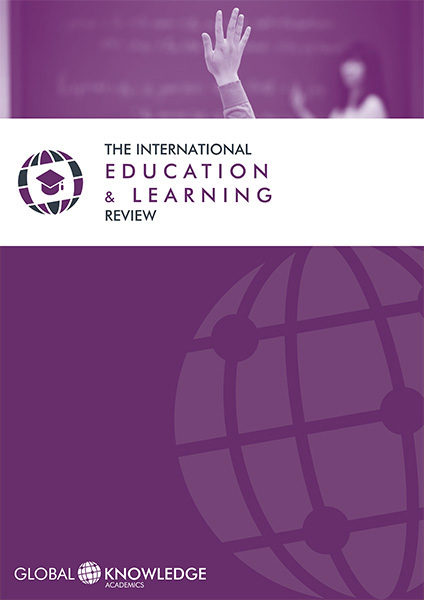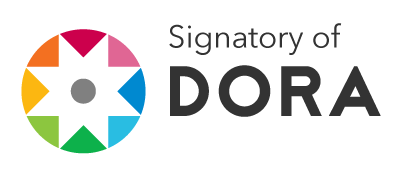Strengthening the visions of students as proficient L2 speakers: A teaching proposal for the EFL classroom
DOI:
https://doi.org/10.37467/gka-edurev.v1.2066Resumen
Over the past ten years, research on second language motivation has been dominated by Dörnyei’s influential motivational paradigm, the L2 Motivational Self System. This theoretical construct is comprised of the ideal L2 self, the ought-to L2 self and the L2 learning experience. Students’ imagined visualisations are central components in this theory, as this holds that students who have an explicit ideal self-image with an L2 component are more likely to be motivated to learn a language than other students that have not established a desired future state goal for themselves. To enhance students’ future-self-images, L2 lecturers can create adequate L2 learning experiences, where methodologies and materials fit in with the students’ needs, and where their visions as proficient users of the L2 are regularly sustained and strengthened by productive and realistic tasks. This article offers a teaching proposal that uses multimodal TED conferences as classroom artefacts to embolden students in the foreign language classroom to speak in public. These students might, if able to visualise their desired language selves portrayed in TED speakers, be motivated to spread their ideas worth spreading.
Descargas
Estadísticas globales ℹ️
|
334
Visualizaciones
|
305
Descargas
|
|
639
Total
|
|
Citas
Al-Shehri, A. H. (2009). Motivation and vision: The relation between the ideal L2 self, imagination and visual style. In Z. Dörnyei & E. Ushioda (Eds.), Motivation, Language Identity and the L2 Self (pp.164-171). Bristol: Multilingual Matters.
Archer, A. (2010). Multimodal texts in Higher Education and the implications for writing pedagogy. English in Education, 44, 201-213.
Bandura, A. (1997). Self-efficacy: The exercise of control. New York: Freeman.
Center, Y., Freeman, L., Robertson, G., & Outhred, L. (1999). The effect of visual imagery training on the reading and listening comprehension of low listening comprehenders in Year 2. Journal of Research in Reading, 22(3), 241-256.
Chun, D. M. (2002). Discourse Intonation in L2: From Theory and Research to Practice. J. Benjamins.
Cohen, A. (1987). The use of verbal and imagery mnemonics in second-language vocabulary learning. Studies in Second Language Acquisition, 9(1), 43-6.
Dörnyei, Z. (2005). The Psychology of the Language Learner: Individual Differences in Second Language Acquisition. London: Lawrence Erlbaum Associates.
Dörnyei, Z. (2009). The L2 Motivational Self-System. In Z. Dörnyei & E. Ushioda (Eds.), Motivation, Language Identity and the L2 Self (pp. 9-42). Bristol: Multilingual Matters.
Dörnyei, Z., & Chan, L. (2013). Motivation and vision: An analysis of future L2 self-images, sensory styles, and imagery capacity across two target languages. Language Learning, 63(3), 437-46.
Dörnyei, Z., & Kubanyiova, M. (2014). Motivating learners, motivating teachers: Building vision in the language classroom. Cambridge: Cambridge University Press.
Hall, E.T. (1966). The Hidden Dimension. New York: Doubleday.
Hostetter, A. B., & Alibali, M. W. (2010). Language, gesture, action! A test of the Gesture as Simulated Action framework. Journal of Memory and Language, 63, 245-257.
Jewitt, C. (2005). Multimodal ‘reading’ and ‘writing’ on screen. Discourse Studies in the Cultural Politics of Education, 26(3), 315-322.
Kim, T.Y. (2009). Korean elementary school students’ perceptual learning style, Ideal L2 self, and motivated behaviour. Korean Journal of English Language and Linguistics, 9(3), 261-286.
Kim, Y. K., & Kim, T. Y. (2011). The effect of Korean secondary school students’ perceptual learning styles and ideal L2 self on motivated L2 behaviour and English proficiency. Korean Journal of English Language and Linguistics, 11 (1), 21-42.
Kress, G., & van Leeuwen, T. (1996). Reading Images: The Grammar of Visual Design. London: Routledge.
Markus, H. & Nurius, P. (1986). Possible selves. American Psychologist, 41, 954-969
Markus, H. & Ruvolo, A. (1989). Possible selves: Personalized representations of goals. In L. A. Pervin (Ed.), Goal concepts in personality and social psychology (pp. 211–241). Hillsdale, NJ: Erlbaum.
McClave, E. (2000). Linguistic Functions of Head Movements in the Context of Speech. Journal of Pragmatics, 32, 855-78.
McNeill, D. (1992). Hand and mind: What gestures reveal about thought. Chicago: University of Chicago Press.
McNeill, D. (2005). Gesture and Thought. Chicago: University of Chicago Press.
Norris, S. (2004). Analysing Multimodal Interaction: A methodological framework. New York: Routledge.
Pink, D. (2019, July). Dan Pink: The puzzle of motivation are [Video file]. Retrieved from https://www.ted.com/talks/dan_pink_on_motivation.
Ruvulo, A. & Markus, H. (1992). Possible selves and performance: The power of self - relevant imagery. Social cognition, 10, 95-124.
Ryan, J., Scott, A., & Walsh, M. (2010). Pedagogy in the multimodal classroom: An analysis of the challenges and opportunities for teachers. Teachers & Teaching, 16(4), 477-489.
Shen, H. H. (2010). Imagery and verbal coding approaches in Chinese vocabulary instruction. Language Teaching Research, 14(4) 485-499.
Sinek, S. (2009, September). Simon Sinek: How great leaders inspire action [Video file]. Retrieved from https://www.ted.com/talks/simon_sinek_how_great_leaders_inspire_action.
Sugimoto, C., & Mike T. (2013). Scholars on Soap Boxes: Science Communication and Dissemination via TED Videos. The Journal of the American Society for Information Science & Technology, 64(4), 663-74.
Unsworth, L. (2011). Image-language interaction in online reading environments: Challenges for students' reading comprehension. Australian Educational Researcher, 38(2), 181-202.
van Leeuwen, T. (2005). Introducing Social Semiotics. London/New York: Routledge.
Descargas
Publicado
Cómo citar
Número
Sección
Licencia
Los autores/as que publiquen en esta revista aceptan las siguientes condiciones:
- Los autores/as conservan los derechos de autor.
- Los autores/as ceden a la revista el derecho de la primera publicación. La revista también posee los derechos de edición.
- Todos los contenidos publicados se regulan mediante una Licencia Atribución/Reconocimiento-SinDerivados 4.0 Internacional. Acceda a la versión informativa y texto legal de la licencia. En virtud de ello, se permite a terceros utilizar lo publicado siempre que mencionen la autoría del trabajo y a la primera publicación en esta revista. Si transforma el material, no podrá distribuir el trabajo modificado.
- Los autores/as pueden realizar otros acuerdos contractuales independientes y adicionales para la distribución no exclusiva de la versión del artículo publicado en esta revista (p. ej., incluirlo en un repositorio institucional o publicarlo en un libro) siempre que indiquen claramente que el trabajo se publicó por primera vez en esta revista.
- Se permite y recomienda a los autores/as a publicar su trabajo en Internet (por ejemplo en páginas institucionales o personales), una vez publicado en la revista y citando a la misma ya que puede conducir a intercambios productivos y a una mayor y más rápida difusión del trabajo publicado (vea The Effect of Open Access).













